A unique collaboration between Indigenous communities and scientists to rewild and regenerate an ancient river

Download as a PDF
Flowing majestically between Finland and Norway, the Njauddâm river landscape is home to the rich cultures of the Skolt Sámi indigenous peoples and the second-most important river in Finland for Atlantic salmon spawning. In a commitment to restore this damaged ecosystem, a deep dialogue formed between Skolt Sámi Indigenous knowledge and scientists, bridging two systems in service to the land and waters.

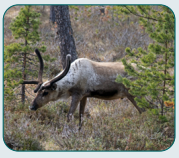
“It’s natural to continue to restore forest nature from the restoration of aquatic nature, as both are interconnected. We develop concrete, placebased models to restore nature’s own ways of repairing itself. The traditional knowledge of the Skolt Sámi and the latest climate science open up new horizons of activity in parallel.”
PAULIINA FEODOROFF, SKOLT SÁMI PROJECT COORDINATOR
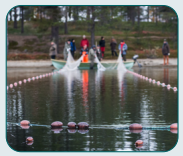
“You cannot muck around on the river. River used to be sacred before. You needed to thank her if you received something.”
JOUNI MOSHNIKOFF, SKOLT SÁMI FISHERMAN
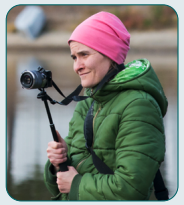
“We have to document and to show that we had a sustainable system of using lands. But we can ask a critical question: What is the origin of these damages we are addressing.”
PAULIINA FEODOROFF, SKOLT SÁMI THEATRE DIRECTOR, ARTIST AND NATURE GUARDIAN
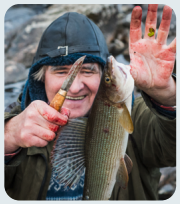
“My grandfather knew the soul of the salmon and passed that on to me.”
VLADIMIR FEODOROFF, SKOLT SÁMI FISHERMAN
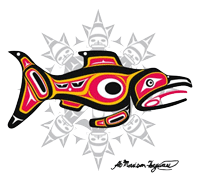
Visit Snowchange.org.
Download as a PDF
The Njauddâm river is an Arctic cross-border river that runs between Finland and Norway. It is the cornerstone and home of the rich cultures of the Skolt Sámi indigenous peoples, and the second-most important river in Finland for Atlantic salmon spawning.
This important area is facing major challenges, including severe climatic fluctuations that affect habitats and water levels and exacerbate the danger of fish parasites. Species distribution and ratio are affected further by salmon farming along Norway’s coast. By-products and emissions from the nearby mining activities, as well as expanding tourist development, also threaten the salmon population, and as a result, the Skolt Sámi way of life.
Shifting relations with the river
In response to these threats, in 2009 the Skolt Sámi developed a community-based climate adaptation plan informed by their indigenous knowledge. This exercise highlighted the Skolt’s customary salmon fishery in the Njauddâm river catchment area as an issue of great concern and led to the creation of the Njauddâm River Collaborative Management Plan.
This collaborative management plan is first of its kind in Finland and has bridged a deep dialogue between Skolt Sámi Indigenous knowledge and contemporary research. The traditional land and water occupancy patterns of the Skolt Sámi has informed scientists and management bodies about the ways different families still use the watershed. The Skolts have preserved the Skolt Sámi Siida traditional village council system as an indigenous decision-making body over generations.
The relationship the Skolts have with the river is multifaced and includes the harvest of diverse fish species, oral histories of place names, seasonal family pathways, handicrafts, songs, and language. Ongoing salmon harvests nourish relationships with the river and simultaneously the Skolt knowledge, tradition, and language.

Jouko Moshnikoff and late beloved Elder Teijo Feodoroff checking their winter nets
Indigenous-led Rewilding
The dialogue between Indigenous Sámi knowledge, scientists, and management authorities yielded a number of hands-on collaborative measures.
Five kilometers of riverbed have been fully restored and made suitable for salmon spawning, based on traditional Skolt knowledge and their intimate relationship with the river. The Sámi have also taken steps to limit their own cultural catch to ensure the number of salmon reaching spawning grounds increases. To reduce pressure on salmon population, they are also targeting predator fish, such as pike and burbot, that hunt in the deep pools of the Njauddâm river.
The Skolt Sámi have taken the lead in daily monitoring of habitat and fish health, making traditional weather observations and forecasts, and communicating these with scientists. They have also pioneered a peer-reviewed method of monitoring ecosystem change through visual histories that combine descriptions, cultural texts, photos, and other means of communicating the real-world events that happen out on the land.
Connecting River and Forest
In 2020, Snowchange Co-op (a local organisation) and the Skolt Sámi worked to secure key forest areas from the open market in Sevettijärvi, Finland, for Sámi-led rewilding and use. To-date, this work has included: securing three separate key forest lots, with a total of 150 hectares along the Sevettijärvi lake and Kirakkajärvi lake systems; development of co-management and co-governance tools for the sites; bird, plant and carbon surveys and stock taking; and documenting Skolt Sámi histories of the sites and their historical uses of timber resources.
These arctic nature sites are unique. Rewilding and restoration focus on forest areas that have suffered loss of biodiversity, basing activities on traditional knowledge, traditional livelihoods, rights and landuse practices, such as reindeer herding and fishing. This work is guided and led by the Skolt Sámi and it is building on and continuing the co-management actions on the Njauddâm river.
Formalising indigenous stewardship is a key strategy. In order to make sure Indigenous rights and free, prior and informed consent are fully realised in the future, Snowchange has sought Skolt Sámi guidance in the process of registering these rewilding sites as Indigenous and community conserved areas.

Opportunities to Support
1. Collaborations between science and traditional knowledge
A number of projects are underway and in need of continued support such as the monitoring of the river health and restored spawning areas by local Skolt Sámi youth. Join us to realize Sámi rights by securing more forest lots for rewilding and Sámi uses, and to support Skolt fishermen like Jouko Moshnikoff in his work to control the invasive and expanding species on the move in the river system as well as many other local actions to enable survival under rapid changes.
2. Finding solutions for the critical survival of the freshwater mussel
The absence of freshwater mussels, one of the cultural and ecological keystone species for Njauddâm basin, has been been a mystery for decades. These mussels are linked with salmon and fish for reproduction. Mussels are natural filters for improved water quality, and their pearls are considered highest of treasures by the Sámi.
Rewilding freshwater mussle stocks in the river is an important next step. Documenting the locations of potential restoration sites and existing individual mussels requires time-consuming underwater survey work and these efforts are in need of support
3. Supporting local cultural land use and community-led restoration
One initiative to restore the watersystem of the Njauddâm basin focused on the Vainosjoki river, an important salmon spawning river that flows into the Njauddam. Two decades of man-made alterations to the landscape had negatively affected the water quality and biodiversity. The restoration work included returning the big stones that had been removed from the river bed in the 1960s and 1970s, bringing great joy to the Sami who could remember the old places in the stream where the displaced stones belonged. These actions restored spawning locations and juvinile fish habitats and proved a successful model of power sharing and process where decisions are jointly made between local organisations, communities, and indigenous peoples. This way of relating led to a more even distribution of power in terms of access to the land and resources as well as the shared benefit and joy of cultivating a more flourishing landscape.
As industrial development initiatives, such as the Artic Railway expansion, present new threats to these areas, models for collaboration and preservation of biodiversity are essential.
To find out more about these projects, please contact Kaisu Mustonen, Head of Biodiversity kaisu.mustonen@snowchange.org.

